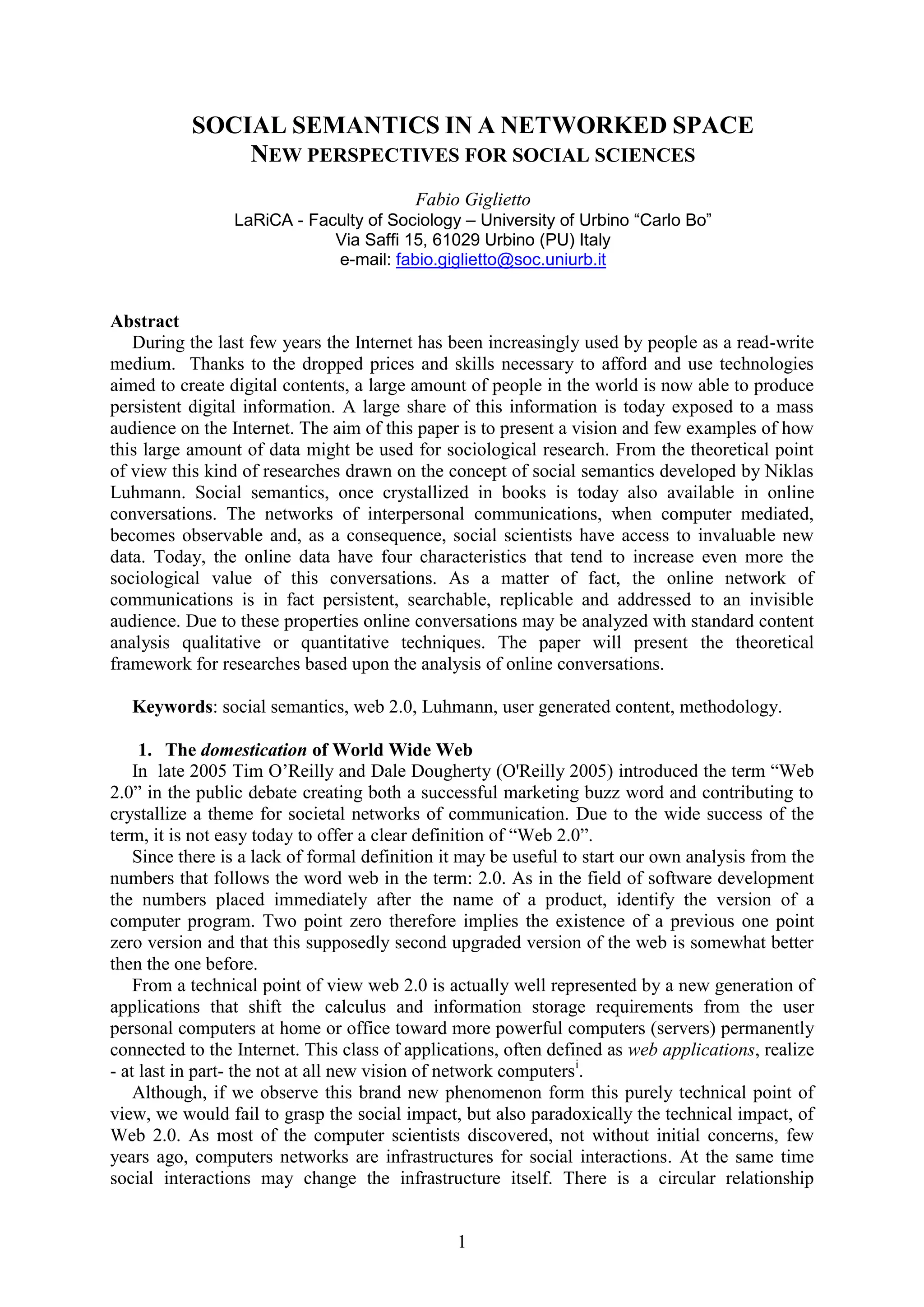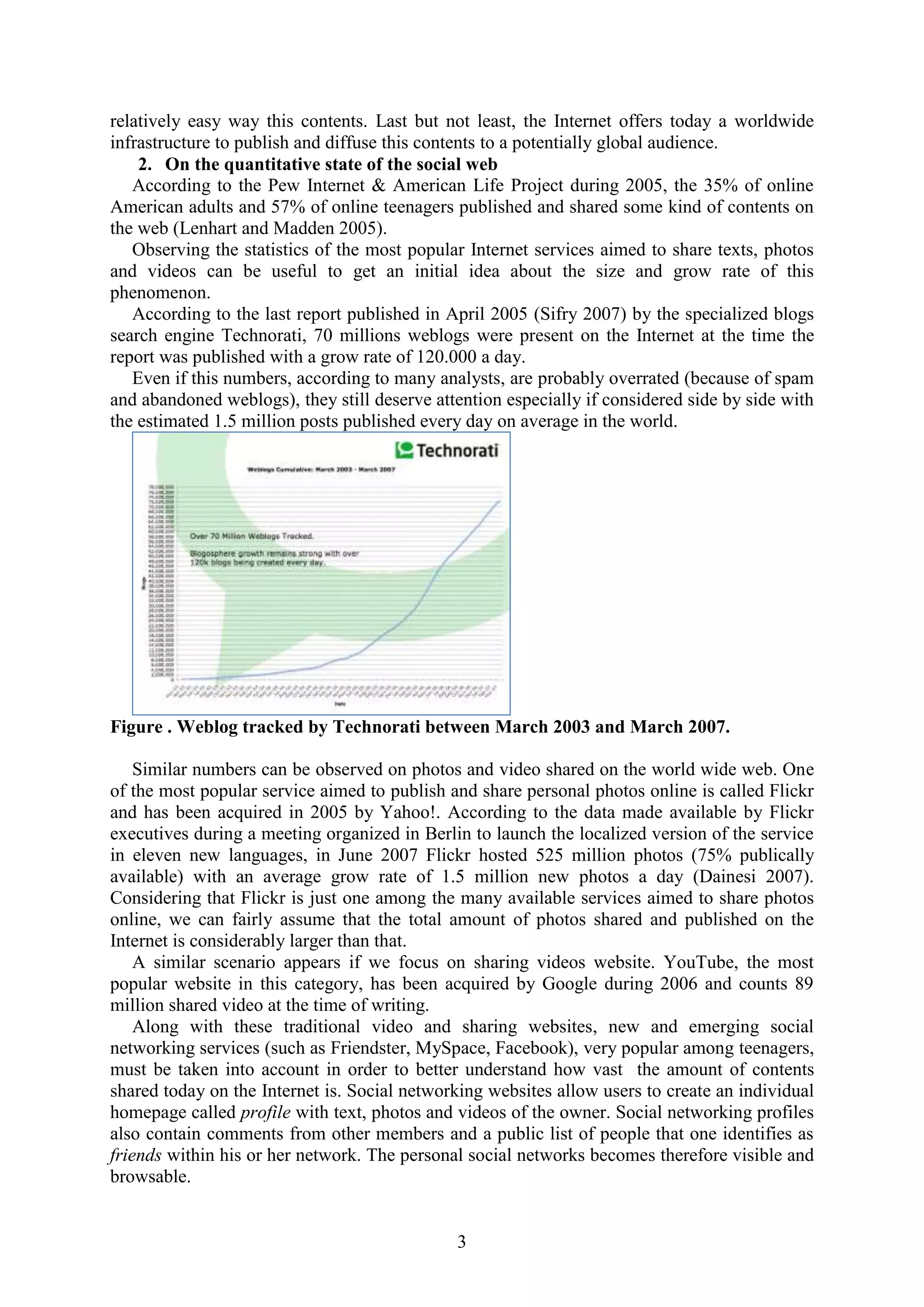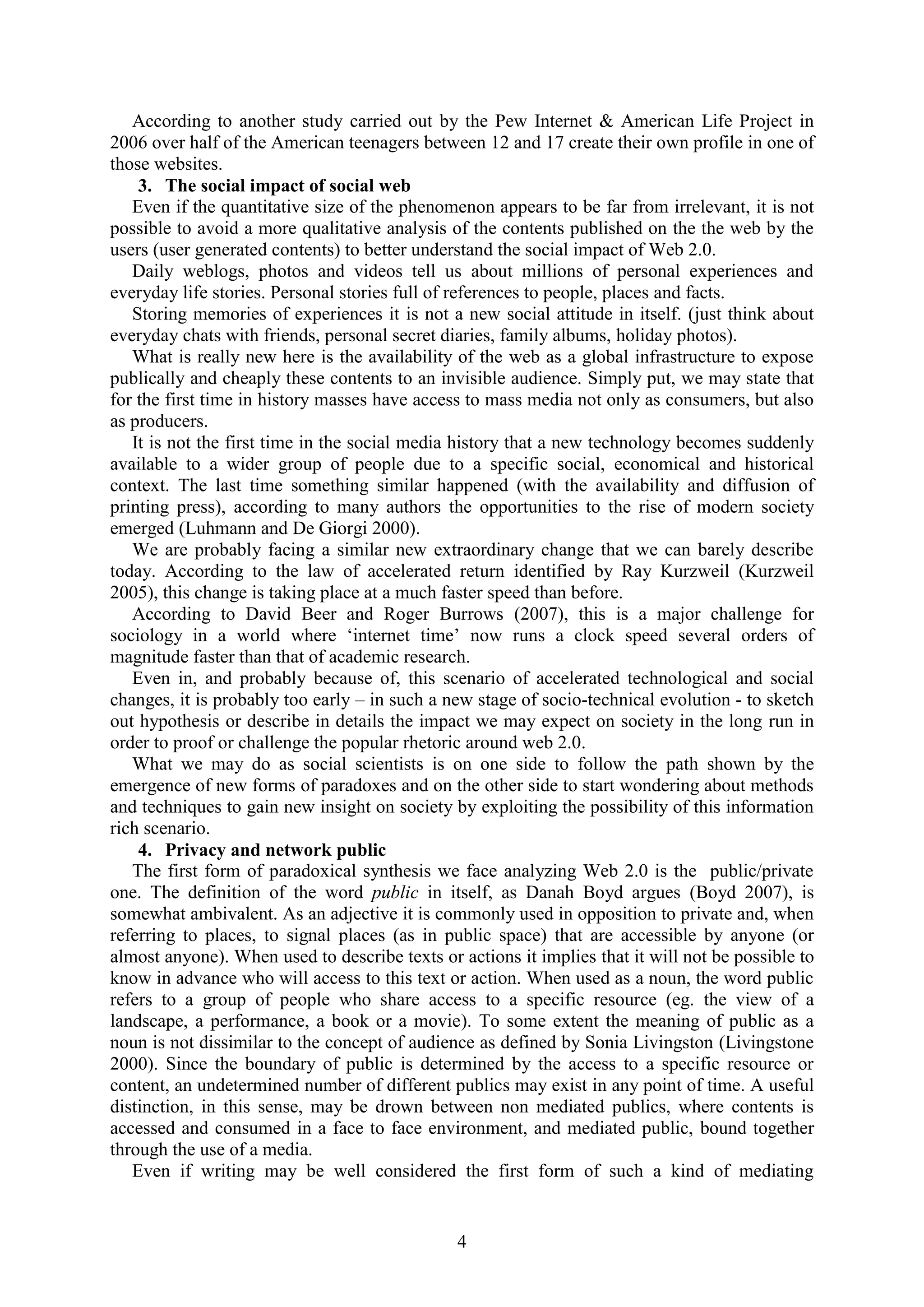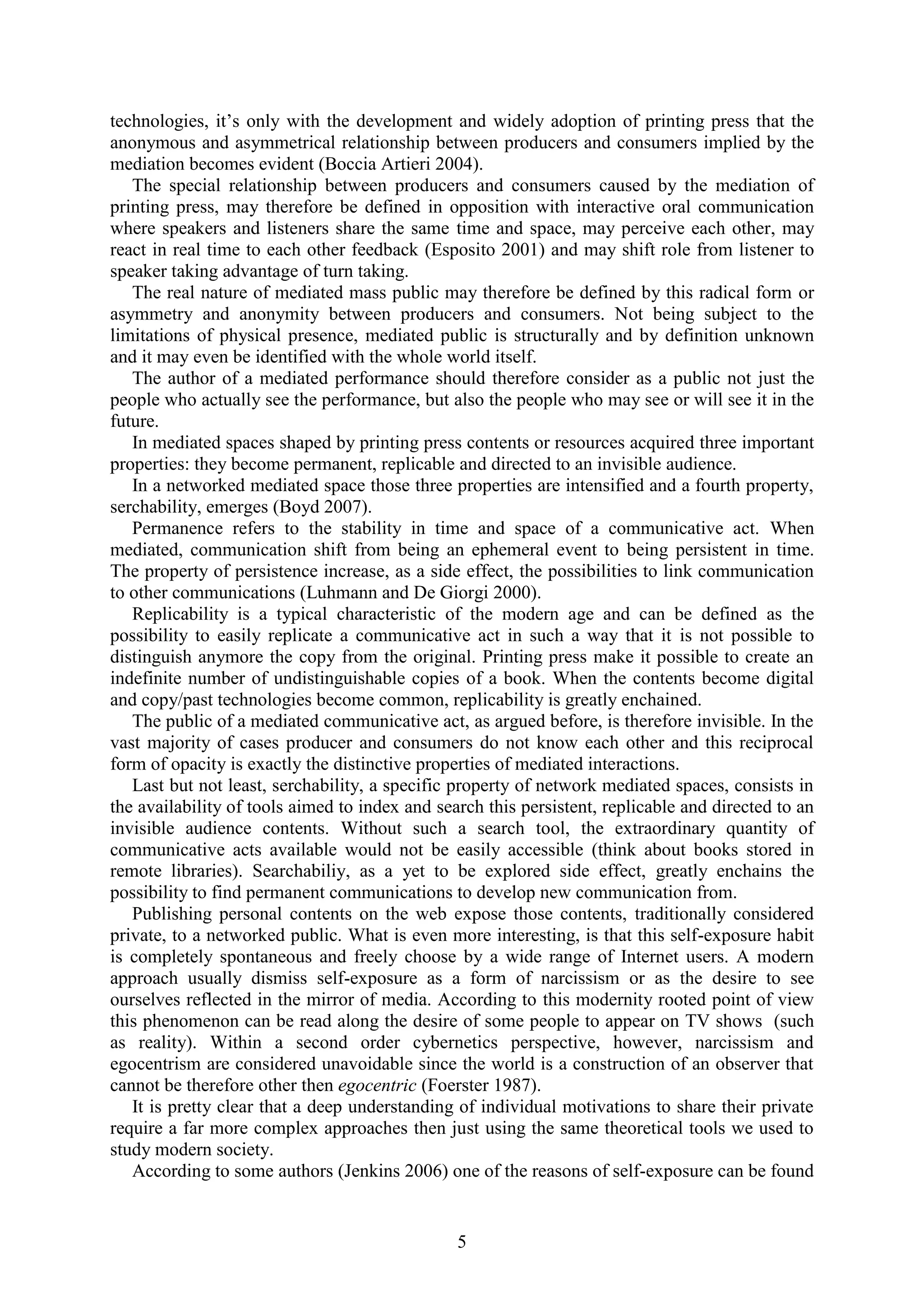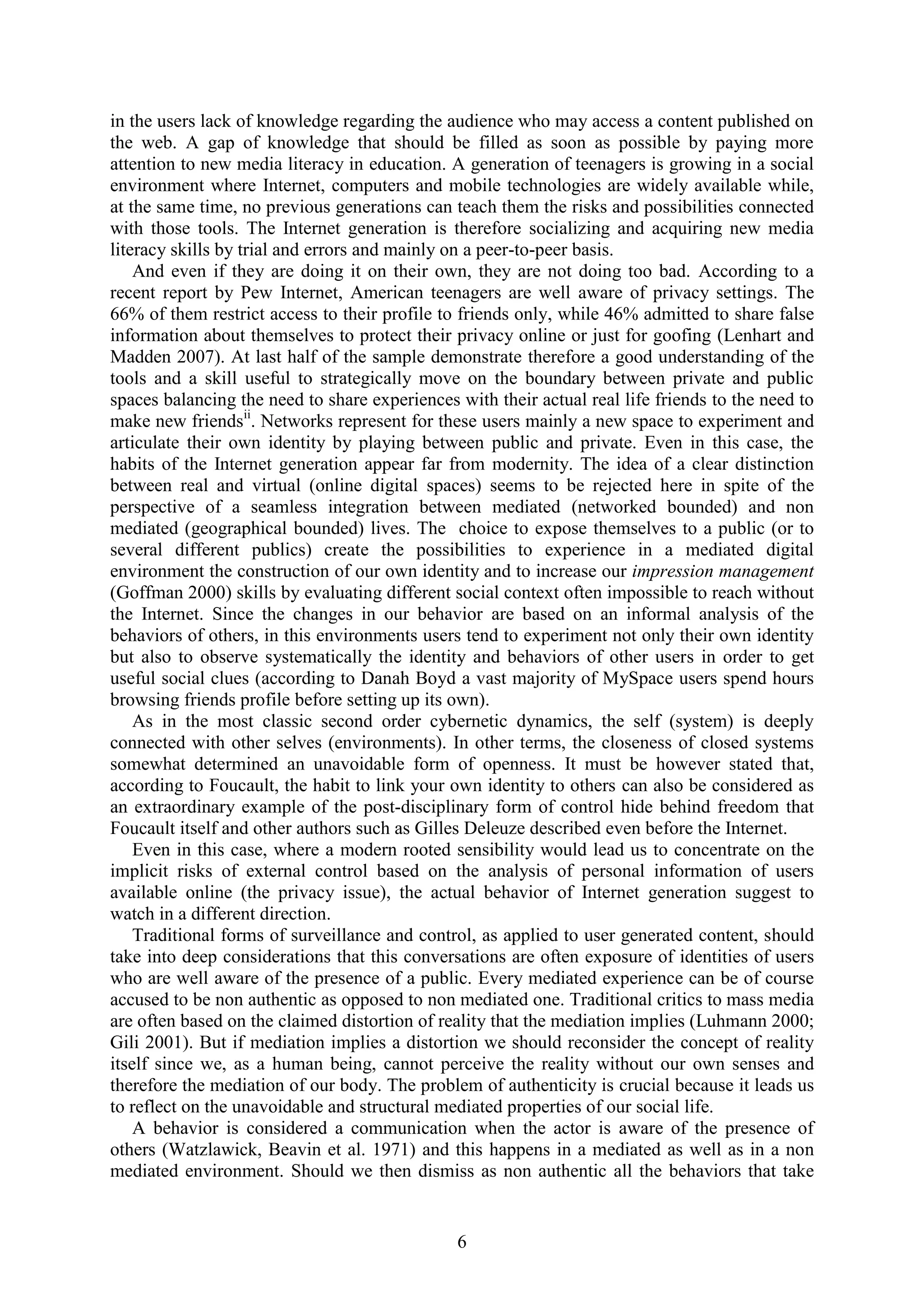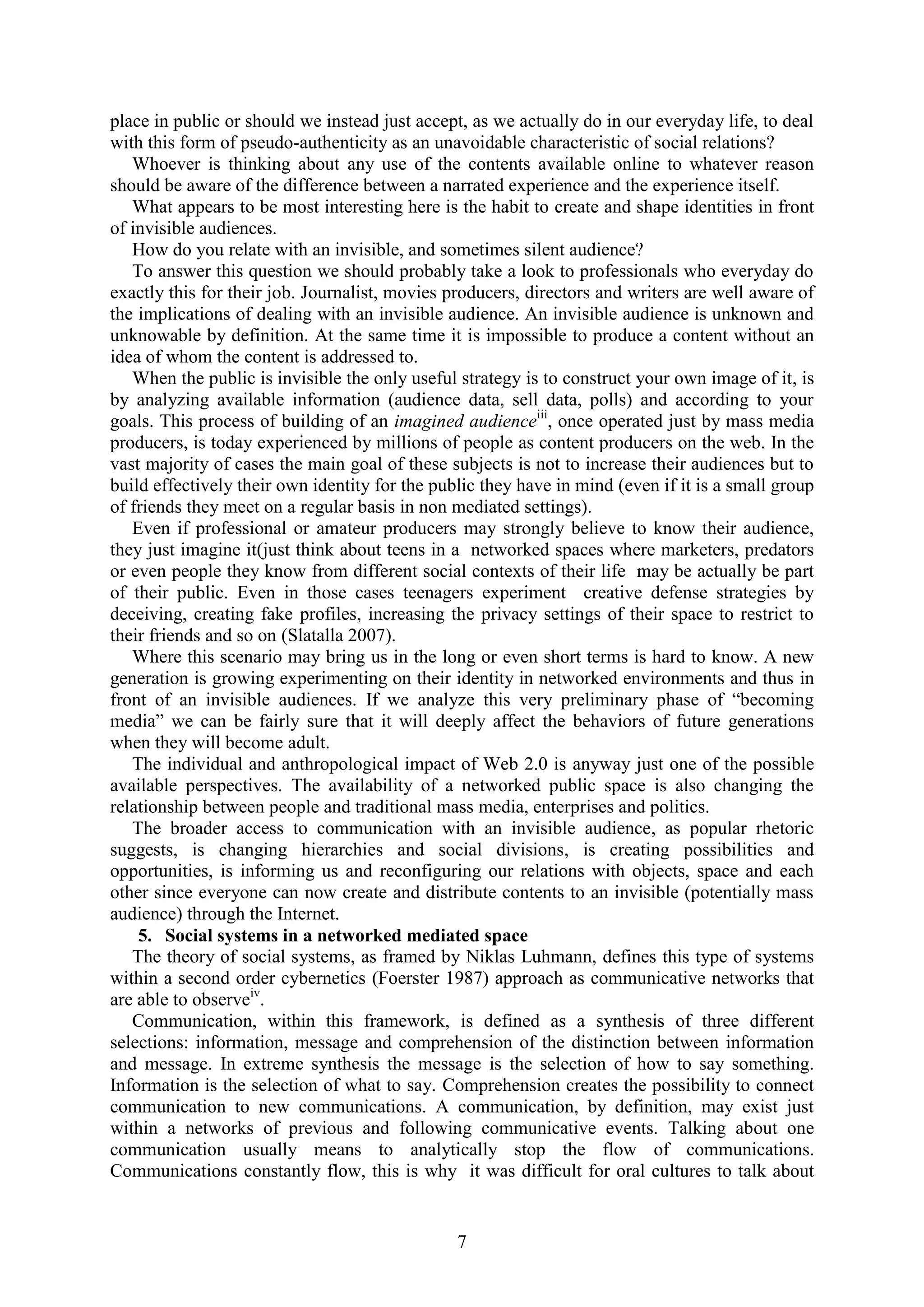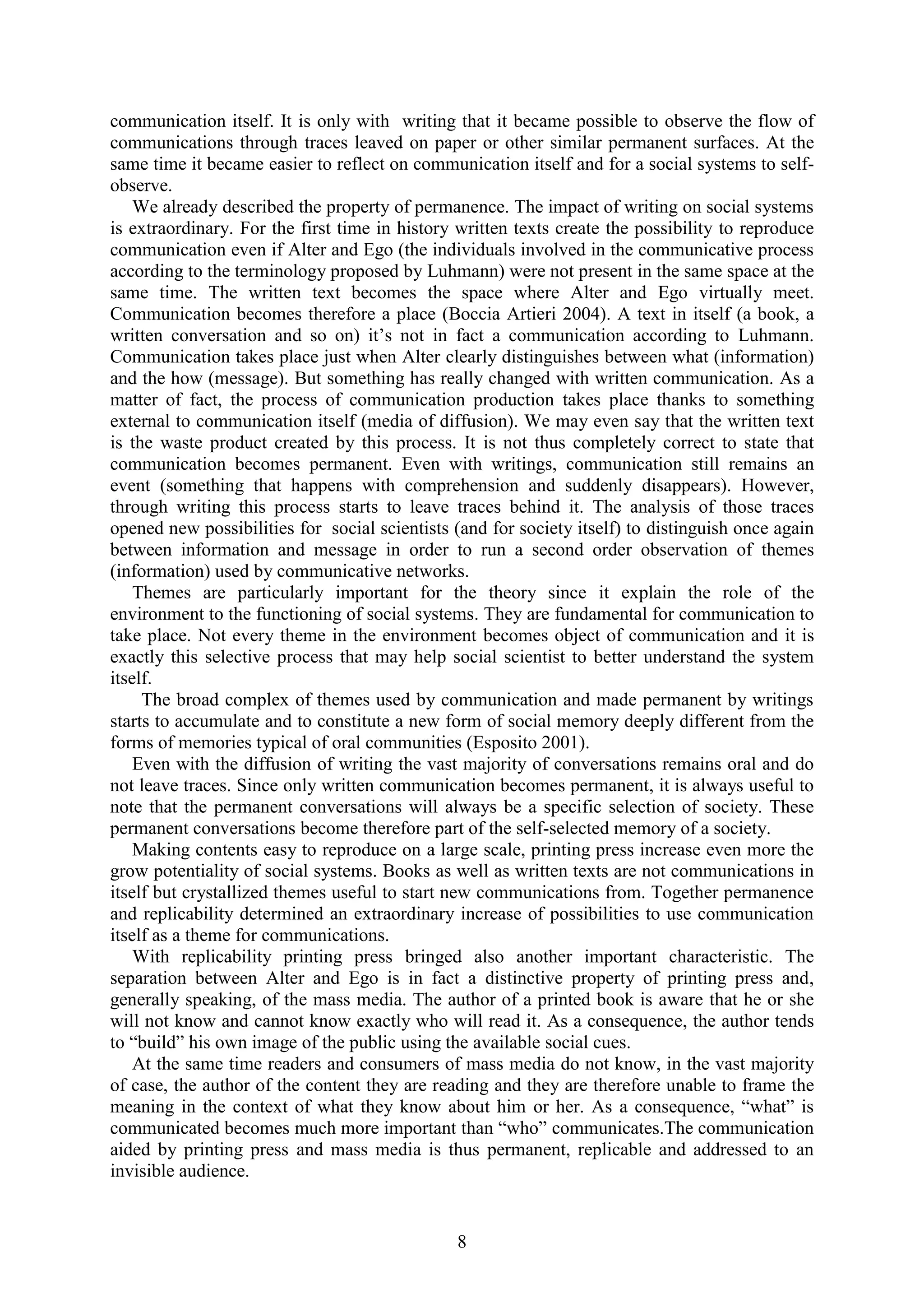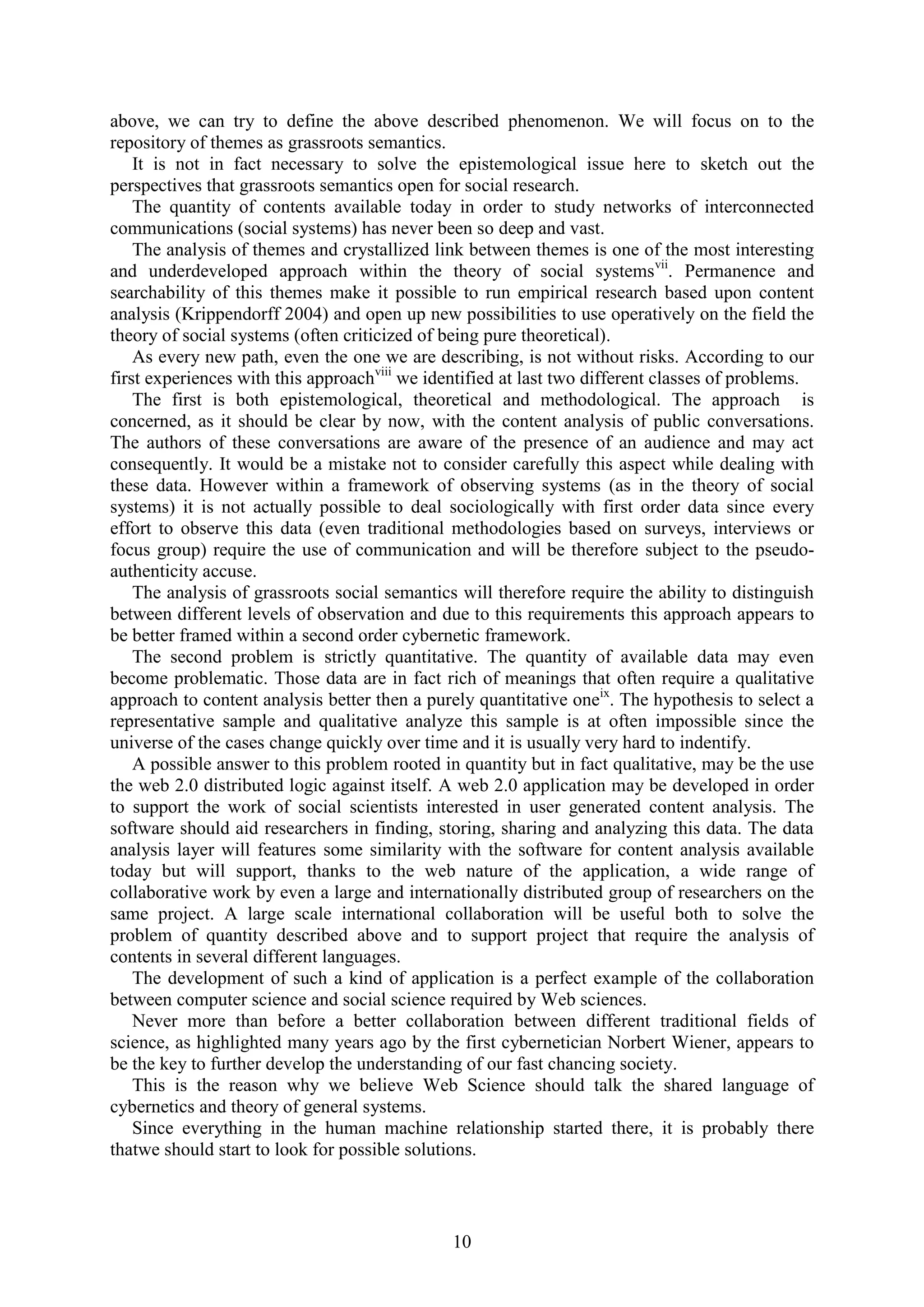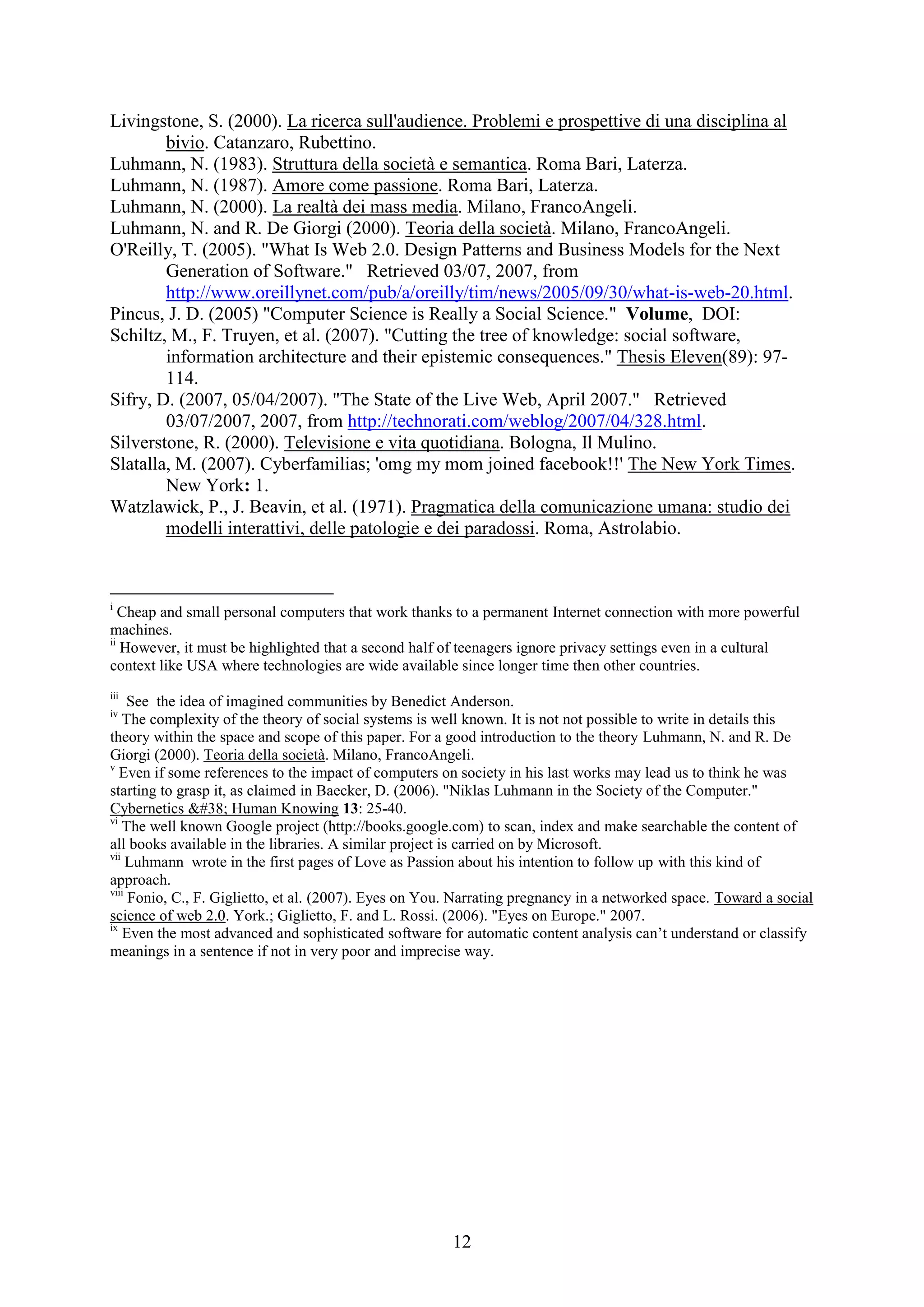This document discusses the rise of user-generated content on the internet, known as Web 2.0. It notes that as technology prices drop, more people are able to create and share digital content like blogs, photos, and videos online. This user-generated content provides a wealth of data about people's everyday lives and social interactions. However, publishing personal content publicly exposes it to a large, invisible online audience in a way that challenges traditional notions of public and private. The document examines some of the theoretical implications of this shift and how social scientists can study online social interactions and their impact.
